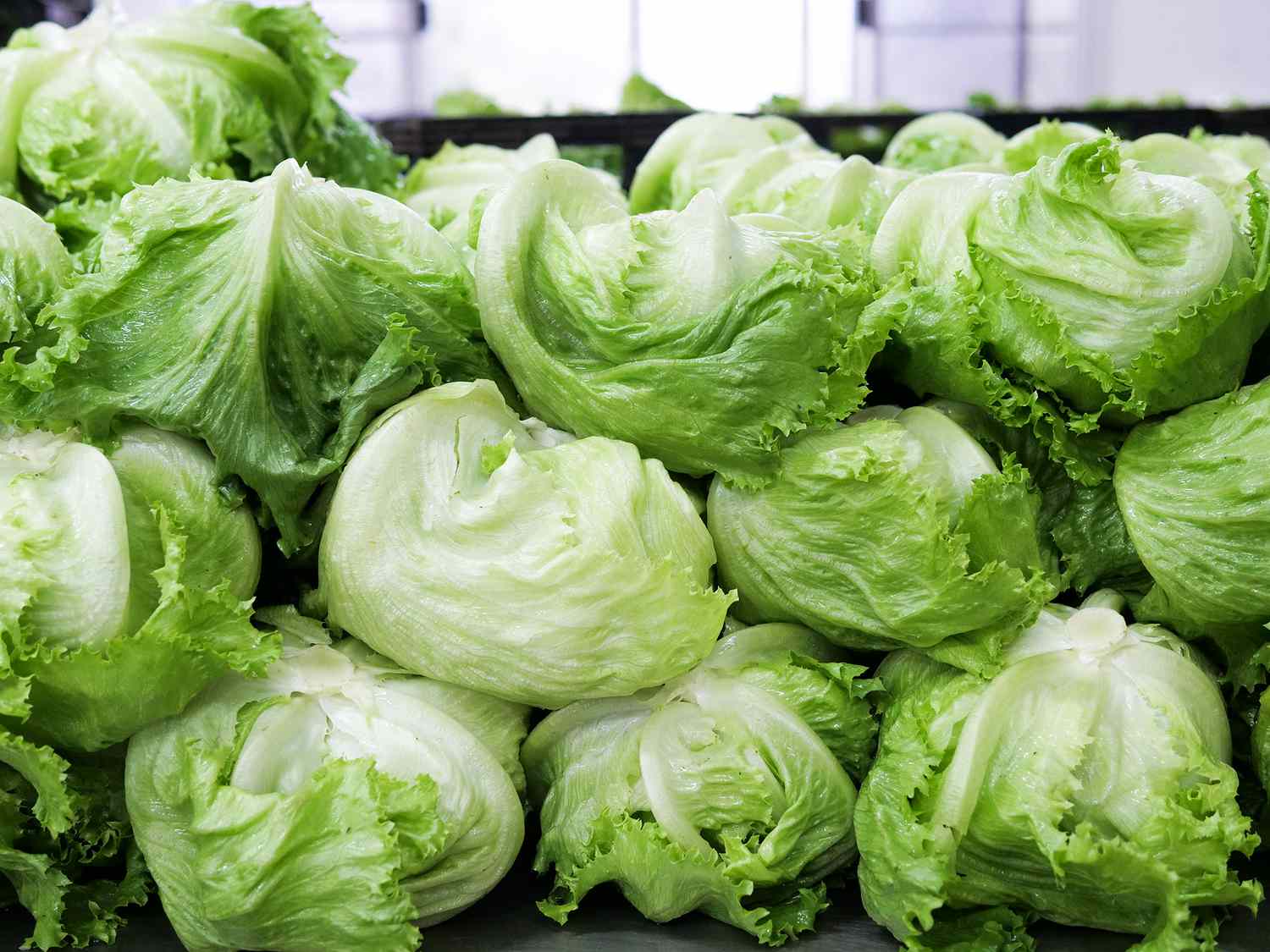
Iceberg lettuce often gets a bad rap for being the bland cousin of leafy greens. But did you know it has a rich history and some surprising benefits? Iceberg lettuce isn't just a crunchy addition to your salad; it's packed with water, making it a great hydrator. Originating from the United States, it got its name because farmers used to pack it in ice to keep it fresh during transport. This leafy green is low in calories, making it a diet-friendly choice. Whether you're a salad lover or just curious, these 25 facts about iceberg lettuce will give you a fresh perspective on this often underestimated vegetable.
Key Takeaways:
- Iceberg lettuce is 96% water, making it super hydrating and low in calories. It's a good source of vitamin K and antioxidants, contributing to overall health and well-being.
- This versatile vegetable is easy to grow, perfect for salads, sandwiches, and even low-carb wraps. It has a longer shelf life and adds a refreshing crunch to various dishes.
What is Iceberg Lettuce?
Iceberg lettuce, known for its crisp texture and mild flavor, is a staple in many salads and sandwiches. Its pale green leaves form a compact head, making it easy to store and use. Let's dive into some fascinating facts about this popular vegetable.
-
Iceberg lettuce was first developed in the United States in the early 20th century. It quickly became popular due to its long shelf life and ability to stay fresh during transportation.
-
The name "iceberg" comes from the way it was originally shipped. Farmers packed the heads in ice to keep them cool, resembling small icebergs.
-
Iceberg lettuce is 96% water, making it one of the most hydrating vegetables you can eat.
-
Despite its high water content, iceberg lettuce is low in calories. One cup contains only about 10 calories.
-
This lettuce variety is a good source of vitamin K, which is essential for blood clotting and bone health.
Nutritional Benefits of Iceberg Lettuce
While iceberg lettuce often gets a bad rap for being less nutritious than other leafy greens, it still offers several health benefits. Here are some nutritional facts that might surprise you.
-
Iceberg lettuce contains small amounts of fiber, which aids in digestion and helps maintain a healthy gut.
-
It also provides folate, a B-vitamin important for cell division and DNA synthesis.
-
The lettuce contains antioxidants like beta-carotene, which can help protect cells from damage.
-
Iceberg lettuce is a source of potassium, a mineral that helps regulate fluid balance and muscle contractions.
-
Although not as rich in nutrients as spinach or kale, iceberg lettuce can still contribute to your daily intake of vitamins A and C.
Growing and Harvesting Iceberg Lettuce
Iceberg lettuce is relatively easy to grow, making it a favorite among home gardeners. Here are some interesting facts about its cultivation.
-
Iceberg lettuce thrives in cool weather and can be grown in both spring and fall.
-
It takes about 70 to 80 days from planting to harvest, depending on the variety and growing conditions.
-
The lettuce prefers well-drained soil with a pH between 6.0 and 6.8.
-
Regular watering is crucial, as inconsistent moisture can lead to bitter-tasting leaves.
-
Iceberg lettuce is typically harvested by hand to avoid damaging the delicate leaves.
Culinary Uses of Iceberg Lettuce
Iceberg lettuce is incredibly versatile in the kitchen. Its crunchy texture and mild flavor make it a popular choice for various dishes. Here are some culinary facts.
-
Iceberg lettuce is a classic ingredient in wedge salads, often topped with blue cheese dressing and bacon bits.
-
It adds a refreshing crunch to sandwiches and burgers, balancing out richer ingredients.
-
The lettuce can be used as a low-carb wrap alternative for tacos and sandwiches.
-
Iceberg lettuce leaves make an excellent base for shrimp or chicken salad cups.
-
It can also be shredded and added to coleslaw for extra crunch.
Fun and Surprising Facts About Iceberg Lettuce
Beyond its nutritional and culinary uses, iceberg lettuce has some fun and surprising aspects. Here are a few more facts to round out your knowledge.
-
Iceberg lettuce was once considered a luxury item and was served in high-end restaurants.
-
The lettuce has been used in scientific studies to understand plant growth and development.
-
Iceberg lettuce is often used in hydroponic farming, where it grows in nutrient-rich water instead of soil.
-
It has a longer shelf life compared to other lettuce varieties, making it a favorite for grocery stores.
-
Iceberg lettuce is sometimes called "crisphead lettuce" due to its crunchy texture.
The Final Crunch
Iceberg lettuce isn't just a crunchy addition to your salad. It's packed with vitamins like A and K, which help keep your eyes and bones healthy. This leafy green is also super low in calories, making it a great choice for those watching their weight. Plus, it's mostly water, so it helps keep you hydrated.
Farmers love growing iceberg lettuce because it's hardy and can withstand different weather conditions. It’s also a favorite in many households because it stays fresh longer than other types of lettuce.
Next time you munch on a crisp iceberg lettuce leaf, remember you're not just enjoying a tasty snack. You're also getting a boost of nutrients and hydration. So, keep adding this versatile veggie to your meals. Your body will thank you!
Frequently Asked Questions
Was this page helpful?
Our commitment to delivering trustworthy and engaging content is at the heart of what we do. Each fact on our site is contributed by real users like you, bringing a wealth of diverse insights and information. To ensure the highest standards of accuracy and reliability, our dedicated editors meticulously review each submission. This process guarantees that the facts we share are not only fascinating but also credible. Trust in our commitment to quality and authenticity as you explore and learn with us.


